Berislav Šipuš, conductor
Krzysztof Cicheński, director
Julia Kosek, costume and set designer
Bartłomiej Szlachcic, video and light designer
Krzysztof Cicheński, director
Julia Kosek, costume and set designer
Bartłomiej Szlachcic, video and light designer
Cast:
Ingrid Haller, Ivana Srbljan, Karol Bartosiński, Marko Fortunato, Nicolas Rigas, Dario Berchich, Dina Dehni Sow,
Ingrid Haller, Ivana Srbljan, Karol Bartosiński, Marko Fortunato, Nicolas Rigas, Dario Berchich, Dina Dehni Sow,
MBZ Zagreb/HNK Rijeka, Croatia, 2017
Production commissioned by Music Biennale Zagreb for its 29th edition. A collaboration with Choir and Opera Orchestra of the Croatian National Theatre Ivan pl. Zajc Rijeka.
Premiere: 22.04.2017, Komedija Theatre, Zagreb, opening of 29th Music Biennale Zagreb Contemporary Music Festival
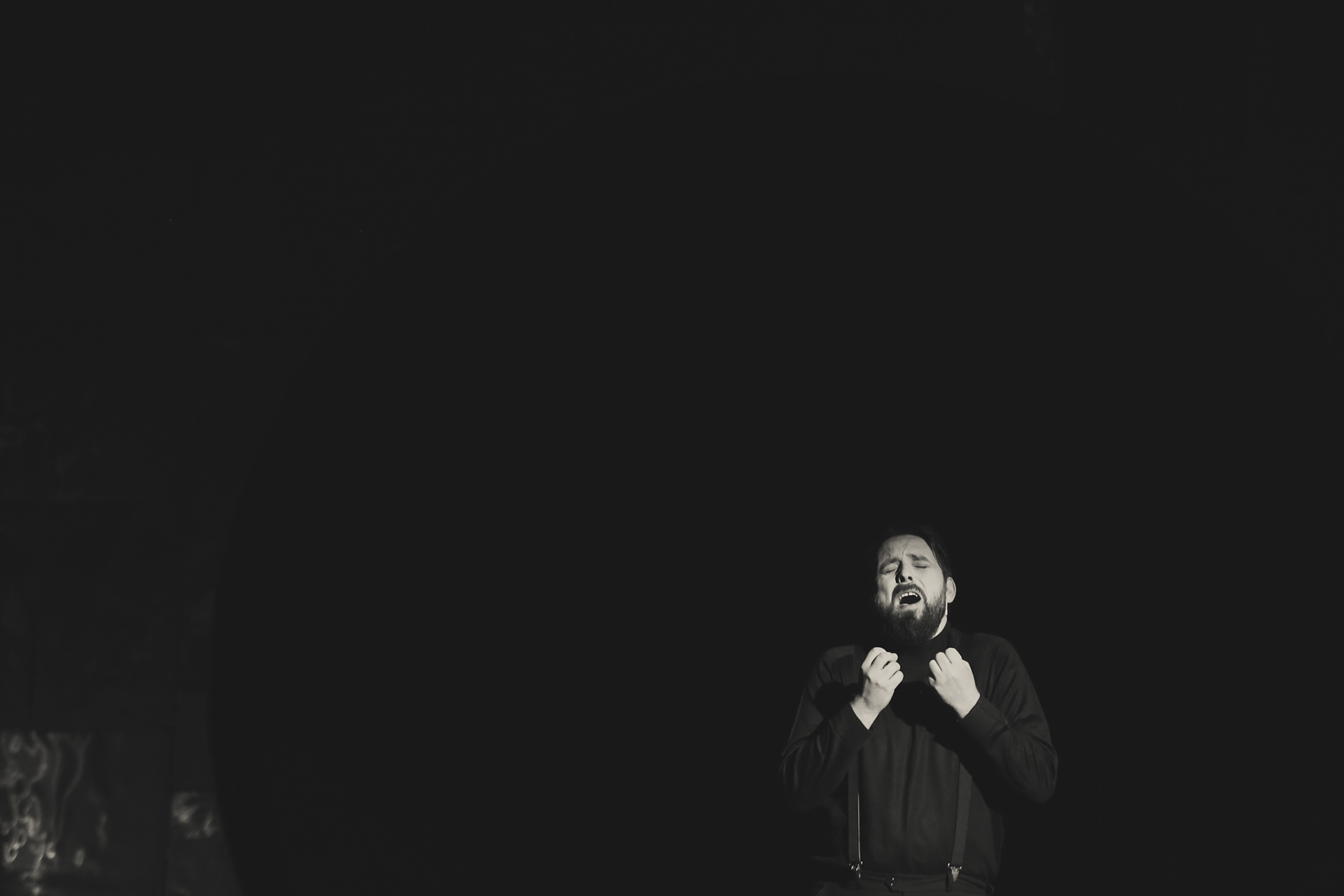
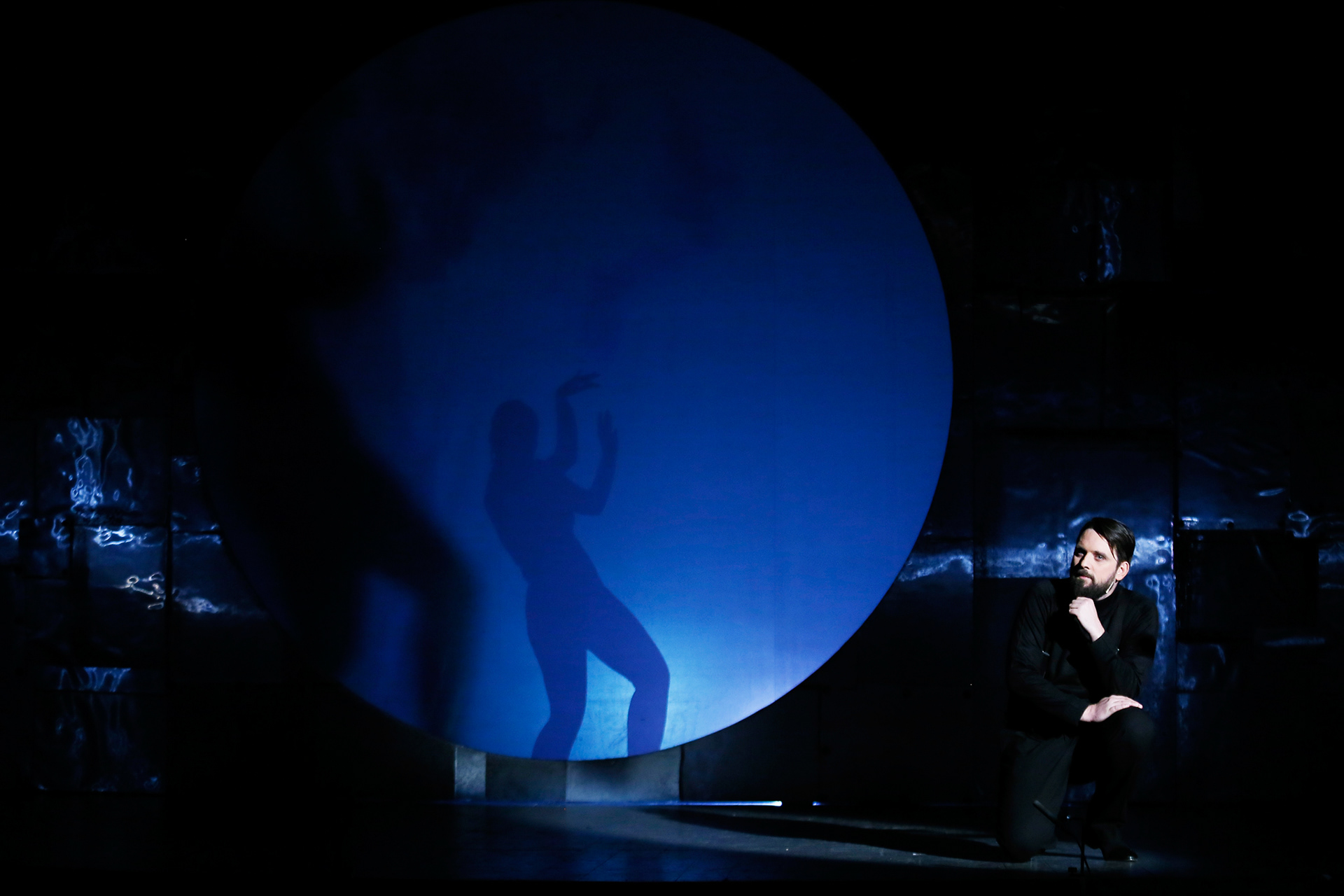
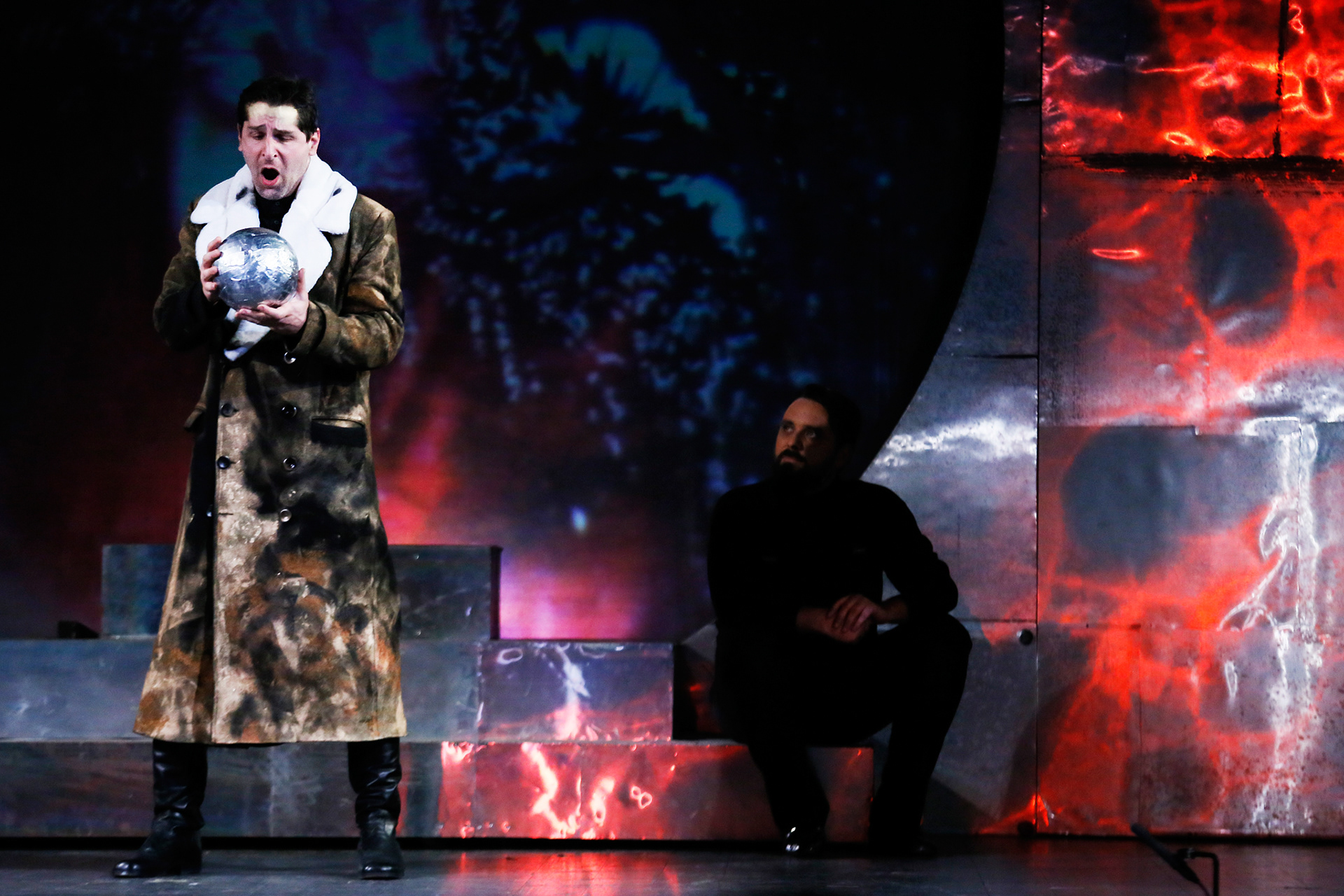
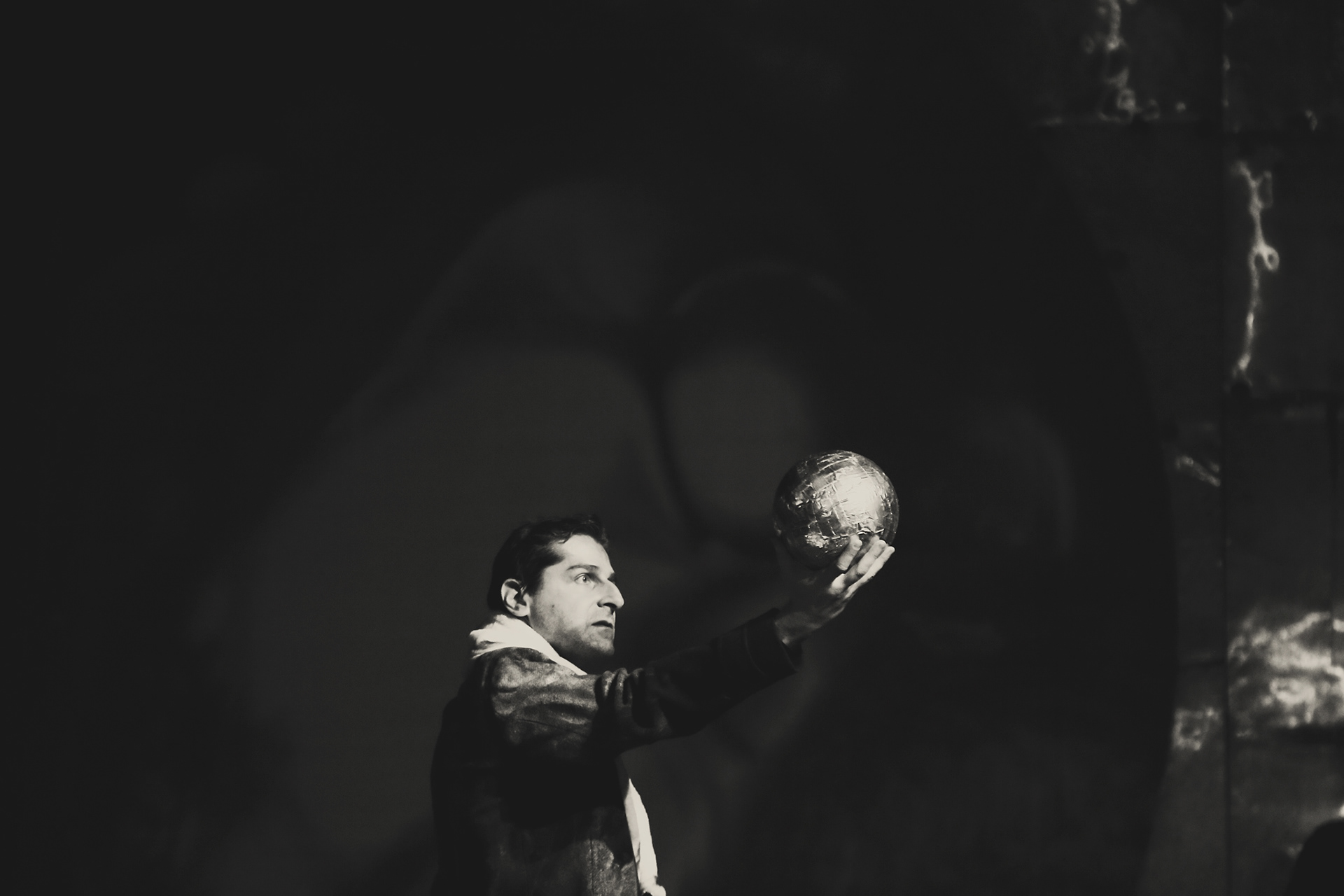
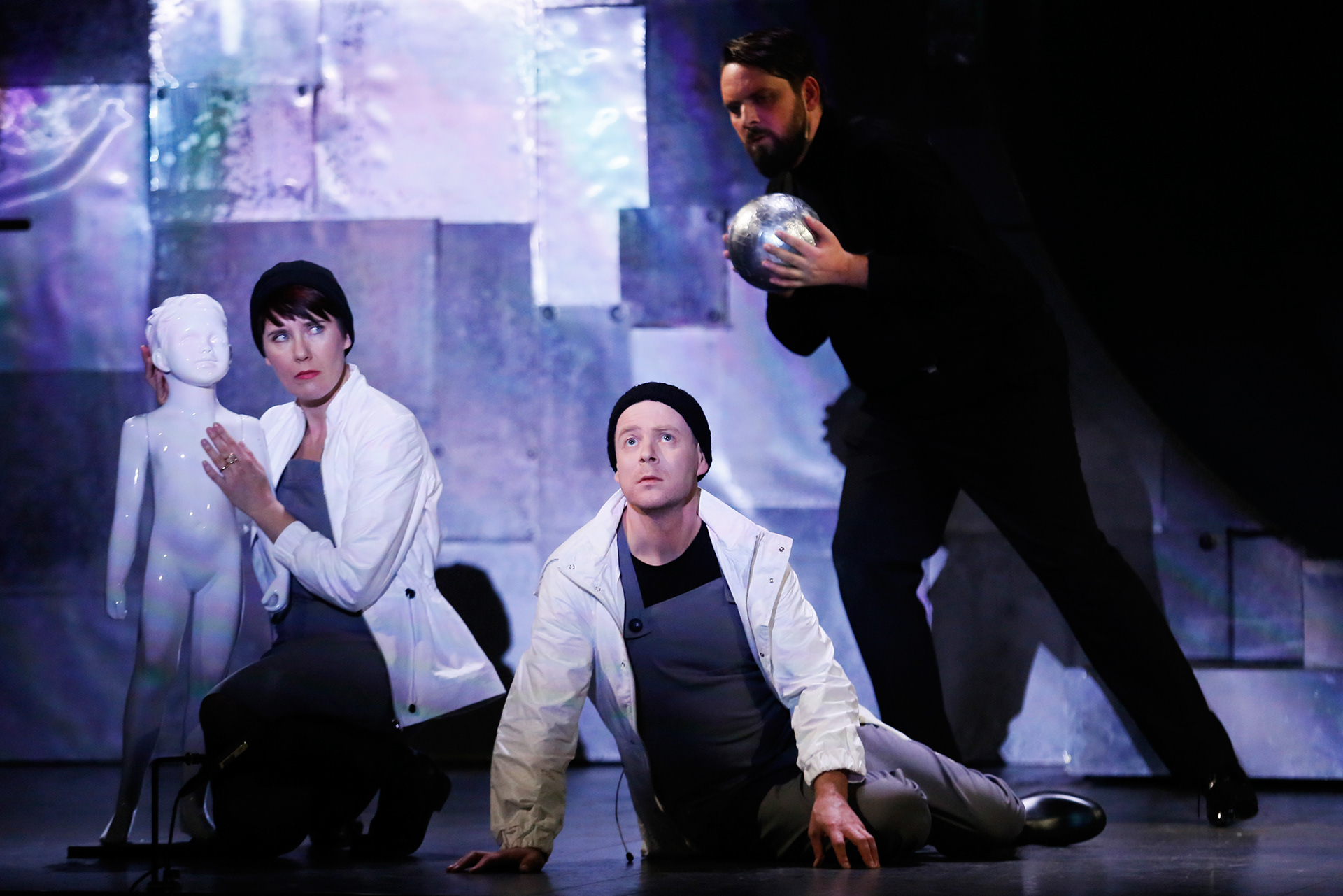

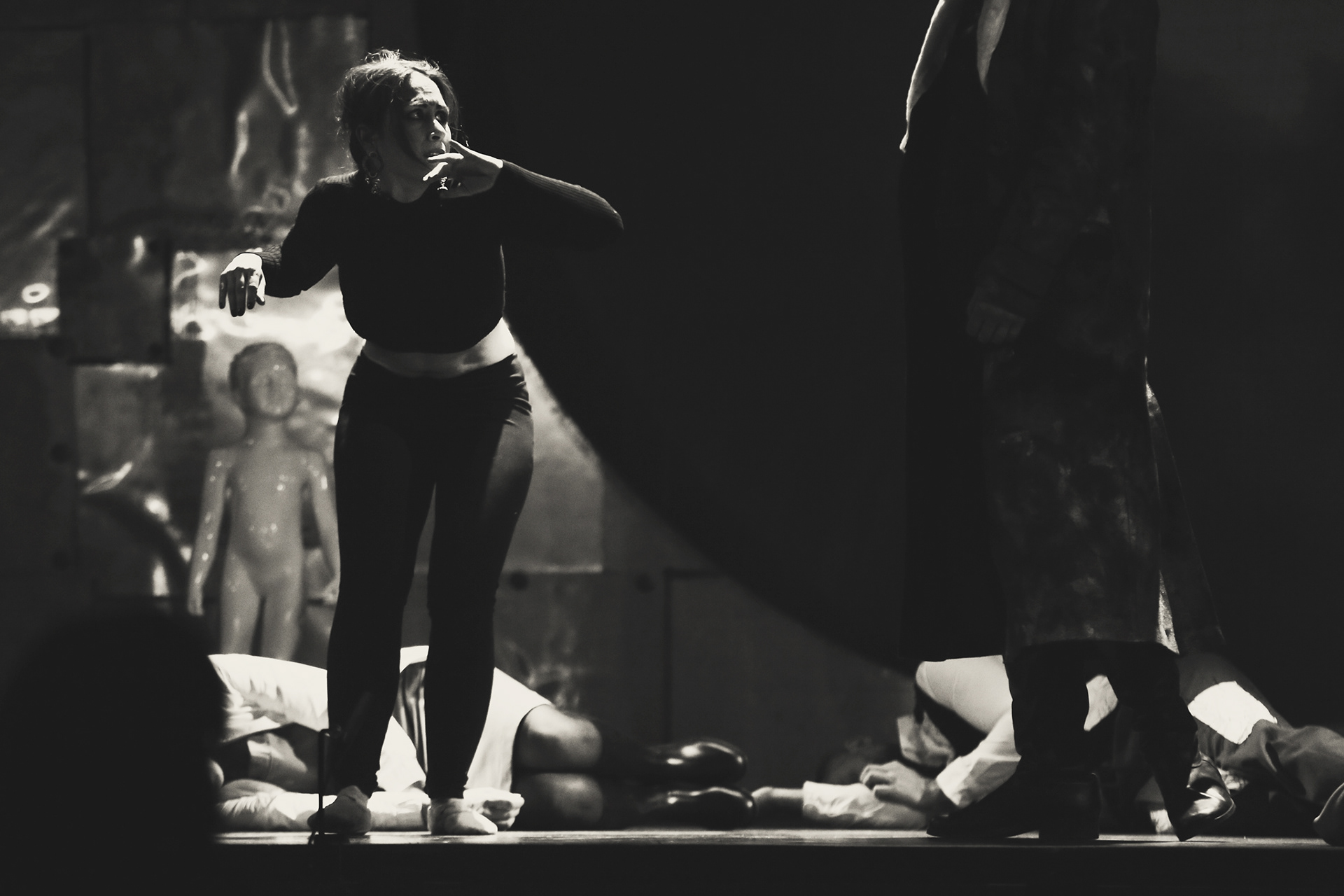
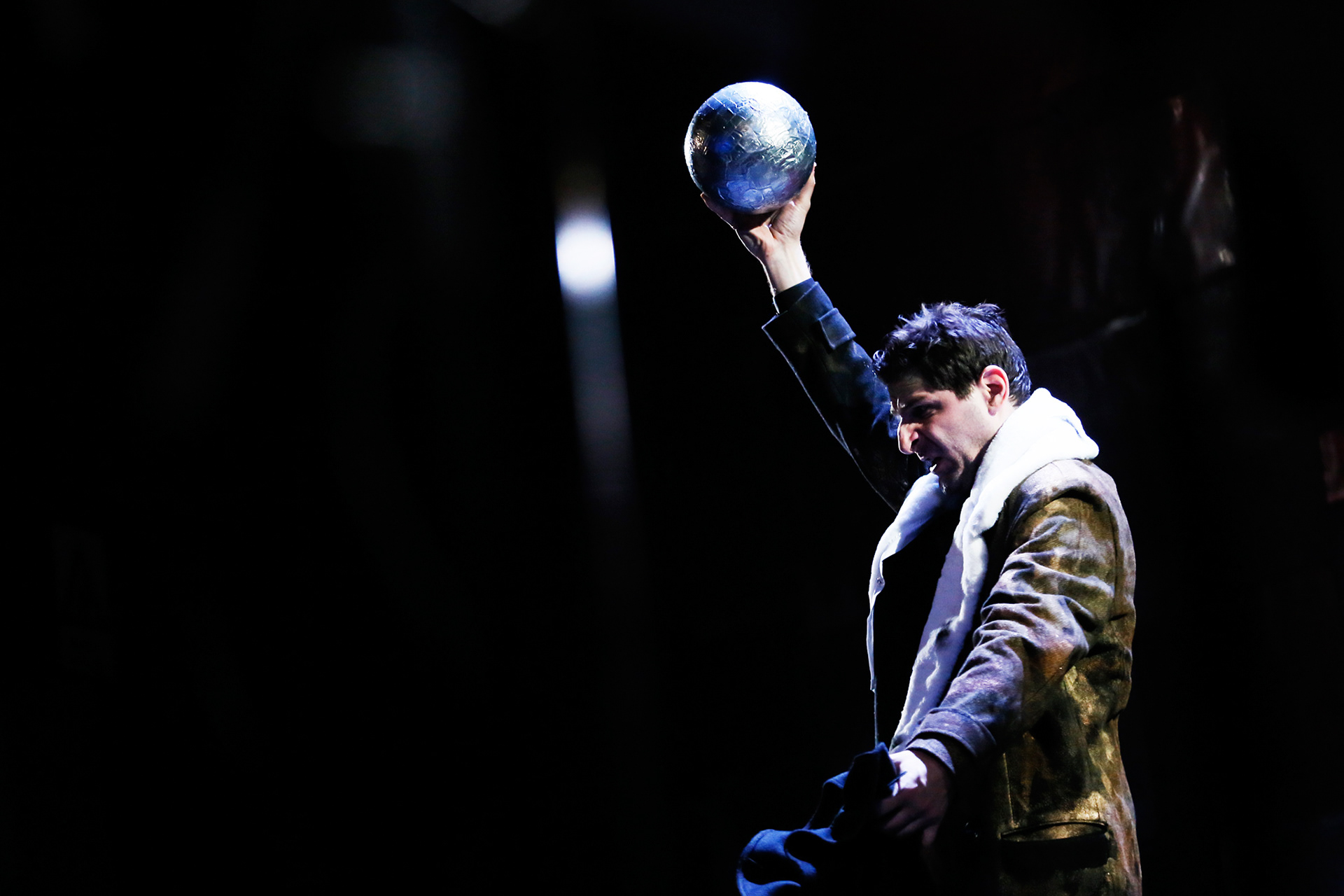
We started our work on „Klothó” before the music has been written. Martyna Kosecka gave us a libretto that she has created by connecting some traditional stories from around the world. First ideas and sketches has begun then from philosophical interpretation of myths and figures that appear in this story.
Klothó is one of three Moiras – sisters from ancient Greek mythology that are taking care of birth, life and death. By spinning a thread she leads a line of life. What kind of world is this – we asked ourselves – if she is alone, without her sisters, which start and cut this line? This could be the mythological, prehistoric era, when night and day, birth and death, lands and oceans had been created and heroes and gods were living immortal or for hundreds of years, born from elements or existed even before everything else has begun. But this could be a future era – a consequence of today’s ambitions to make people living forever. Our imagination, based on some science-fiction stories and post-human ideas of modern philosophers, told us that when humanity will reach that point and fight death in the same moment, birth won’t be possible anymore and only Klothó will be still spinning a line of life, her never ending thread.
And what role in this post-human world will be given to great myths and simple tales? That was our second basic question. The metaphoric sense of a whole title – “Klothó. The Thread of Tales” – is that life is like a plot, the line of a story is identified with a line of life. So the story must continue to save the life of whole humanity. This is a simple thesis that gives us more inspirations for our futuristic and in the same time universal interpretation. Myths are our cultural DNA – we must know them and understand well to save our life as we must know our genetic code to fight diseases and biological weakness. They give us examples of human behavior and show consequences of following by people good and evil paths. To save our life we cannot forget them and we must share our knowledge with others. And these thoughts led us to the idea of a strange space-ship, a capsule sent to the universe, where stories from around the world are enclosed. People has already done this – some years ago information about earth and human beings were sent in space. There were not only chemical patterns and zero-one codes, but as well some samples of our cultural heritage, like Bach’s Goldberg Variations played by Glenn Gould…
Working on these ideas, we could listen to some of Martyna Kosecka’s other works (among them was “Kochawaya” – a piece that won “5-minute Opera Composition Competition” and is a reason that “Klothó” will be produced by MBZ in Zagreb) and with that impression we have already presumed, that this opera might be a strong resume of her inspirations and ideas. We expected an emotional, mysterious and even furious music, full of noise, with many layers of scratching, knocking, whistling and other sounds, produced by orchestra and singers but in an unconventional form. And when we have got first fragments of scores, our presumptions has been confirmed! Knowing the music of each scene we could work then on other ideas, such as forms of acting and relations between the music, lights and projections. We were sure that this composition should be connected with very analytic form of staging, as it is not illustrating an everyday life and common feelings. We start building tensions between characters, choir and orchestra, the storyteller and his alter ego – Klothó – and also the audience, a visible witness of our story. We compare a spoken word with a traditional, narrative dance from India, we use modern, futuristic visuals with some universal, archetypic forms of costumes or geometrical figures like circle and triangle. We consider ontology of Eo’s inhuman voice and unlively presence of boy Senn among others, bored of repetitive life characters, which seem to be also lifeless. Like myths do – we try to create or put some metaphors, secrets and riddles, available to encode by everyone in his own way. We hope that the audience will share their interpretations among each other as we were doing it while working on this opera. What does a myth, a figure, a noise or silence mean to you? What sense it has in connection with other symbols, impressions and feelings? From threads provided by the composer, we added a few of ours and finally, with the whole crew, we made a net of associations. We believe it has a shape of spider’s net and by choosing one of many threads, everyone will get to the center and instead of a creature will find a magic ball, our interface for projections, which shows visions normally hidden deeply in mind. During our work on Klothó we shared many esoteric and mystic ideas that each one of us believes in. We were speaking another language to find senses and explanations of every little meaning that has appear in rehearsal room and around coffee tables – this text looks like a sample of this way of communication and attention. We hope that we will inspire you to follow our philosophy and continue this work. We hope that no one will let Klothó and her story die.